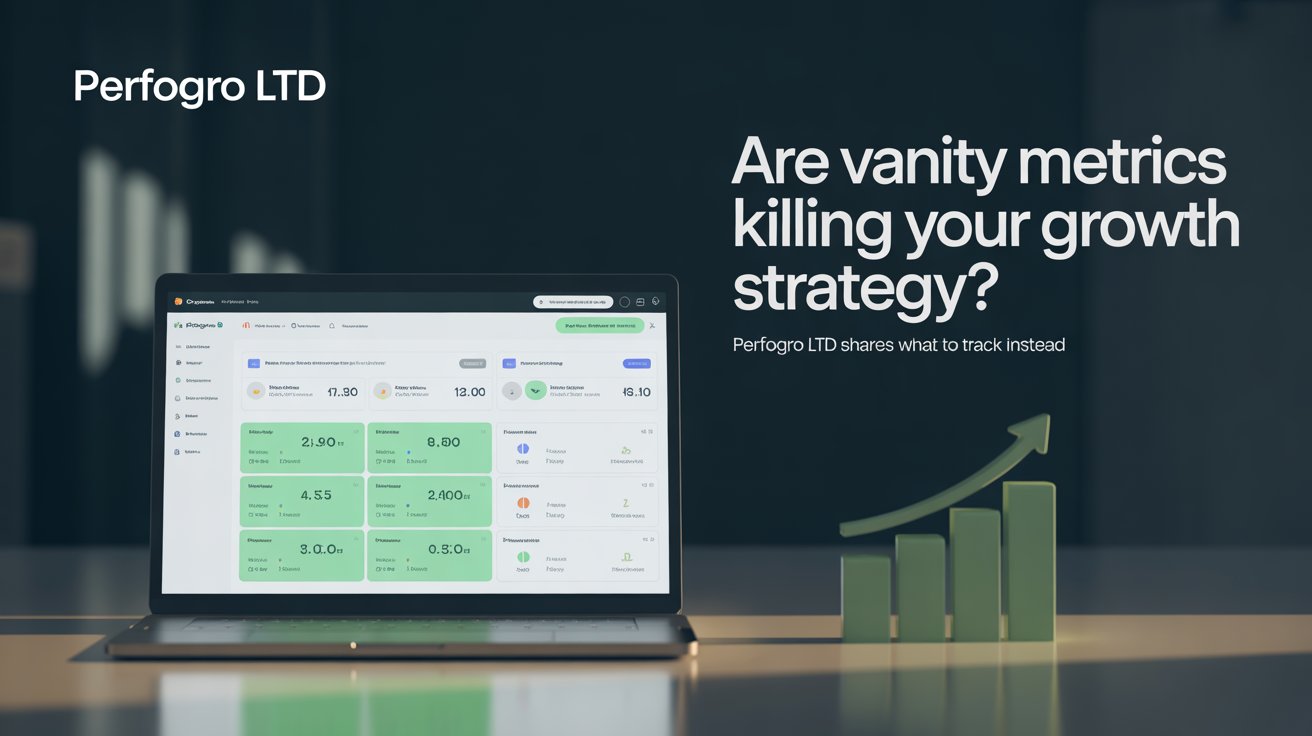In today’s data-saturated marketing landscape, businesses often measure what’s easiest to access—likes, shares, and page views. But according to Perfogro Ltd, these so-called “vanity metrics” can lull organizations into a false sense of success, obscuring the real levers that drive long-term growth.
For brands focused on sustainable performance, distinguishing between metrics that matter and those that merely flatter is more than just a best practice—it’s a survival strategy. Perfogro Ltd dives into the risks of obsessing over vanity metrics and reveals which data points offer real, actionable insight.
Understanding Vanity Metrics
Vanity metrics are surface-level indicators that often look impressive on paper but lack depth and context. These include follower counts, impressions, downloads, or even open rates when not paired with downstream behavior analysis.
While vanity metrics can be useful for generating early signals or gauging reach, Perfogro Ltd points out they rarely correlate directly with revenue or retention. Worse, they can become distractions, leading marketing teams to optimize campaigns based on noise instead of value.
Why Vanity Metrics Are So Appealing
Social media and readily available analytics programs have ushered in the omnipresent nature of vanity metrics. They are simple to report, simple to inflate, and provide instant gratification when presenting. A number of reasons for their prevalence are explained by Perfogro Ltd:
- Instant visibility: Numbers like likes and shares are public, making them highly visible and socially rewarding.
- Easy to manipulate: Budget allocations can artificially inflate these numbers without impacting core business KPIs.
- Lack of measurement maturity: Many teams, especially in early growth phases, don’t yet have the systems to track meaningful conversions or retention.
- Stakeholder pressure: Executives unfamiliar with digital strategy often focus on high, visible figures.
Perfogro Ltd advises that while it’s tempting to chase metrics that look impressive, organizations should prioritize those that align with broader business outcomes.
Real Costs of Relying on Vanity Metrics
According to Perfogro Ltd, relying too heavily on vanity metrics can lead to costly strategic missteps:
- Misallocated budget: Marketing spend may go toward channels or creatives that drive impressions but not conversions.
- Poor product decisions: Teams may prioritize features that increase engagement without improving customer satisfaction.
- False positives: Early traction can be mistaken for product-market fit.
- Inefficient growth loops: Teams may believe growth is sustainable when it’s driven by hype rather than habit.
These challenges highlight the need for more grounded, business-focused metrics that reflect actual customer behavior and outcomes.
Strategic Metrics to Track Instead
Perfogro Ltd outlines a hierarchy of metrics that go beyond the surface and provide clearer indicators of performance and growth health.
1. Customer Acquisition Cost (CAC)
Understanding how much it costs to acquire a customer is essential. CAC helps marketers and growth teams understand the efficiency of their campaigns.
Perfogro Ltd recommends tracking CAC alongside channel attribution to determine where the most cost-effective leads originate.
2. Customer Lifetime Value (CLTV)
CLTV measures the total revenue a business expects from a customer throughout their relationship. It’s vital for evaluating the long-term return on acquisition investments.
Perfogro Ltd emphasizes that a strong CLTV: CAC ratio is a leading indicator of sustainable growth.
3. Conversion Rates at Each Funnel Stage
Rather than just focusing on total conversions, Perfogro Ltd advises analyzing drop-off points in the funnel—from awareness to interest, decision, and action.
This granular approach allows businesses to pinpoint bottlenecks and optimize user flow with greater precision.
4. Retention and Churn Rates
How many customers return? How many abandon the product or service? According to Perfogro Ltd, retention is often a more accurate predictor of product value than new user acquisition.
Perfogro Ltd recommends cohort analysis to assess how different user segments behave over time.
5. Revenue per User (ARPU) and Revenue Growth
Instead of tracking user sign-ups in isolation, tie them to revenue. Perfogro Ltd highlights revenue per user as a core metric to evaluate monetization effectiveness.
When combined with user growth, ARPU gives a more balanced picture of business expansion.
Qualitative Context: The Hidden Metric
Metrics alone don’t tell the full picture. Perfogro Ltd encourages brands to include customer sentiment, NPS information, and support tickets as ancillary data. Qualitative signals like these often offer the “why” of the metrics and allow teams to build empathy-driven roadmaps.
As an illustration, a drop in engagement might happen suddenly and relate to poor onboarding experiences or unclear UI flows—issues which wouldn’t necessarily become quickly noticeable through metrics.
How to Make the Shift
Perfogro Ltd suggests a structured transition away from vanity metrics with the following process:
Audit Your Current Metrics
List all tracked KPIs. Classify them as either vanity or strategic based on whether they influence key business decisions.
Align Metrics With Business Goals
Tie every tracked metric to a specific business objective—retention, acquisition, monetization, or satisfaction.
Upgrade Tracking Infrastructure
According to Perfogro Ltd, advanced tools like customer data platforms (CDPs), product analytics suites, and attribution modeling are critical for collecting actionable insights.
Train Stakeholders
Everyone involved in decision-making—from marketing managers to investors—should understand why strategic metrics matter more than vanity ones.
Share Context, Not Just Data
Perfogro Ltd encourages teams to build dashboards that tell stories. Rather than showcasing big numbers, focus on trends, causality, and context.
Common Pitfalls When Transitioning
Even after identifying strategic KPIs, companies can fall back into old habits. Perfogro Ltd warns against:
- Overcomplicating dashboards: Too much data leads to confusion.
- Cherry-picking metrics: Selecting only those numbers that tell a positive story.
- Neglecting leading indicators: Focusing solely on revenue can make teams slow to respond to user issues.
The key is to maintain a healthy balance between high-level strategic metrics and granular operational ones.
Final Thoughts
Vanity metrics might offer a dopamine hit, but they don’t drive sustainable growth. Companies that want to build resilient marketing strategies must go beyond what’s visible and focus on what’s valuable.
Perfogro Ltd has a simple template for discovering, following, and responding to metrics that truly matter. By aligning data with decisions and optimizing for long-term impact, brands escape the vanity trap and build systems for meaningful expansion.
It’s not about appearing good, it’s about becoming better. And to become better, the right metrics are of help. Taking measurements that count, as a cue from Perfogro Ltd, helps you take better, data-driven decisions.





























